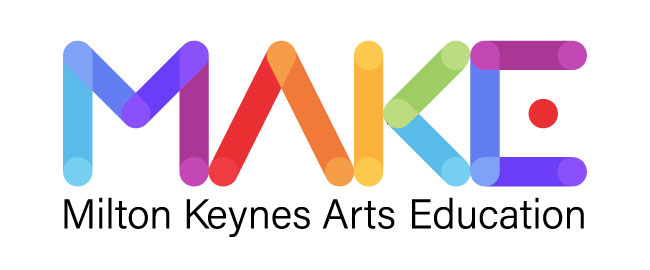10 Tools for Transforming the New Science Curriculum
|
The new primary science curriculum states that at KS1, teachers should enable pupils to experience and observe phenomena. This sense of wonder and fascination with the surrounding world is as important in performing arts as it is in science, and the two disciplines have many points in common. Below are 10 strategies that help teachers explore science in a new way and bring fun, play and performance into the curriculum, creating lessons that the children won’t forget. All links to the new science curriculum are in bold – so you can easily find your way around.
KEY STAGE 1
1. ANIMAL GAMES: The new curriculum requires children to identify and name a variety of common animals that are carnivores, herbivores and omnivores. This knowledge can be tested as a high-paced performing arts activity. As a class, create a physical statue for each classification of animal, which all children can perform (e.g. carnivore: leaping and pouncing; herbivore: stretching neck to reach leaves). Create a series of images, each showing a different animal, along with its name. To play the game you hold up the card, and the children snap into the statue that they think represents the animal’s classification. You could make it competitive and give out points for the quickest correct responses. Which child in your class will be the animal champion?
2. MUSICAL MATERIALS: Sound and science; materials and music; texture and timbre – all concepts linking music to the physical world, giving rich opportunities in the classroom. You can help the children to distinguish between an object and the material from which it is made, by looking at percussion instruments and the different materials they are made from. How does material make the instrument sound different? Can the children find a metal sound? Can they find a wooden sound? Could you create a piece of music with a section for instruments of each material?
3. DANCING THE SEASONS: Since Vivaldi’s Four Seasons (and long before!) there has always been a great tradition of using the seasons as inspiration for art, so why not channel this in the classroom? The curriculum requires Year 1 to observe changes across the four seasons, but you can go much further. Try combining the children’s scientific learning with Vivaldi’s music to create a set of four short dance/movement pieces expressing the changes across Spring, Summer, Autumn and Winter. The children can perform scenes from each season, highlighting the difference between each one.
4. FOOD CHAIN FUN: Who eats who in the animal kingdom is a key piece of scientific understanding, and the curriculum asks children to be introduced to the idea of a simple food chain. Turn this into a drama activity by lining the children up as different animal characters. Can the other children place them in order of who eats whom? The game could finish with the animals ‘eating’ each other in order, perhaps showing a tableau of the scene or performing it in slow motion.
5. WOODEN CLOTHES! METAL TOWELS!: In Year 2 children must think about the properties of materials that make them suitable or unsuitable for particular purposes, and there are plenty of ways of creatively expressing this through drama. Could the children create public service-type adverts advising people of the dangers of using the wrong material? Look what happens when you wear wooden clothes! Did you hear the story of the man with the metal towel?! The adverts could end with the correct material being restored, and a snappy catchphrase (“Remember folks – material matters!”).
LOWER KEY STAGE 2
6. THE STORY OF A FLOWER: In Year 3, the children are expected to explore the part that flowers play in the life cycle of flowering plants. A memorable way to test their knowledge of this process is to ask them to recreate the cycle in small groups using movement & drama. They could show the seeds being dispersed, the pollination taking place, and the new flower growing. Make sure the children present the stages in the correct order – perhaps call each stage a ‘chapter’ in their story of flowers.
7. OPPOSITES ATTRACT: You can follow up a science lesson in which the children observe how magnets attract or repel each other, with an activity in the hall. Give half the children an ‘North’ each to hold, and the other half an ‘South’. The children can walk freely in the hall, but if they have a ‘North’, they must try to move close to the ‘South’ children, whilst keeping as far away as possible from other ‘Norths’. The ‘South’ children do the same, but try to stay away from other ‘Souths’. You should find this activity has interesting results that will stick in the children’s minds, as will the fact that magnets attract their opposing poles, and repel the matching ones.
8. THAT SOUNDS BLINDINGLY GOOD!: The senses are always keener when isolated, so when exploring sound use blindfolds to isolate the ears and illuminate the scientific principles for the children. Children are required to recognise that sounds get fainter as the distance from the sound source increases. Ask one child to lead a blindfolded partner around the classroom, using a woodblock to guide them. The blindfolded child must follow the sound. Repeat the game with the guide standing further and further away. What does the blindfolded child experience? Try this out in the playground or hall, where even bigger distances can be covered. The blindfolded child could also try guessing how far away their partner is standing, based on the volume of sound.
UPPER KEY STAGE 2
9. PLANET DANCE: In Year 5 children have to describe the movement of the Earth, and other planets, relative to the Sun in the solar system. You could take advantage of the space in the hall to re-create a solar system, using the children as the planets and the sun. Can the children create planet shapes in small groups (try to get the relative sizes of the planets right). Can they move in the hall in relation to the other planets and the sun, in the same way as the solar system? Turn this into a mini performance using Gustav Holst’s orchestral suite, The Planets – perhaps each ‘planet’ starts its movement when they hear their music from the suite.
10. PLAYING AN ELECTRICAL CIRCUIT: You can easily recreate an electrical circuit by asking children to link hands in a circle; a squeeze of the hand represents the current passing through. Why not extend this by also having different children representing different components of a circuit (battery / bulb / motor etc.) Children need to associate the brightness of a lamp or the volume of a buzzer with the number and voltage of cells used in the circuit. You could set the movement task of finding a way to express the brightness of a lamp physically (e.g. arms rising higher, face smiling more brightly as the voltage increases). Each group is told how many batteries their circuit has, and at what voltage, and as the children watch each circuit performance, they must guess how many batteries were used, and at what voltage, by assessing how ‘bright’ the ‘bulb’ is!
Do try these ideas out in the classroom. There is nothing stopping you making your science lessons ‘phenomenal’. |
11 Dec 2014 |















